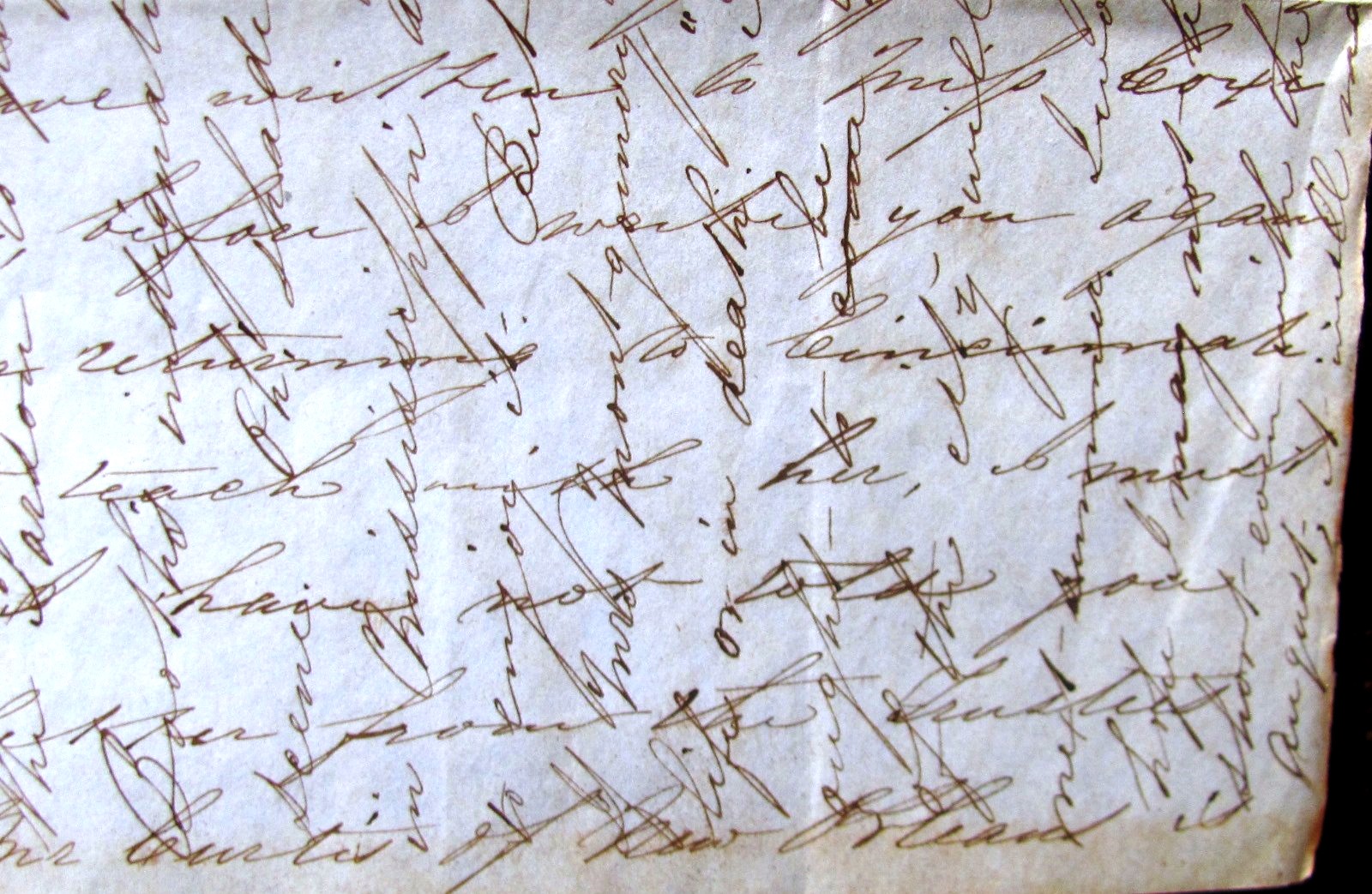
What is cross writing? I can only speak from my own experience from handling these early pieces of ephemera. In my 50 years buying and selling early letters and other old documents, I have only seen a handful of cross letters. Here is one I managed to hang on to. I think some will find this interesting.
It’s really difficult to read – and this is on both sides of a 7.5-inch by 9.5-inch piece of paper. The author was competent writing with a quill pen. Probably it was a gold nib, housed in an abalone or wooden pen-shaped instrument. She knew when to dip the nib in the ink, to reload the nib with ink, and continue writing. It is flawless, with very fine letters.
In those days, penmanship was taught in schools. The paper has yellowed, and the old iron-based ink turned brown, and soiled some, so it’s difficult to read, but here is some of what I can make out. There is more to be gleaned from this letter.
The photo with this article is a close-up of a small section of the letter. Read what you can, and then turn the newspaper 90 degrees to your right, to continue reading. In part, it reads:
“Proctorsville, Vt, March 13th, 1850
My dearest [illegible], I do wish that it were in my power to write you an interesting letter, full of life and good spirits, but I am dull and what is worse so nervous that I scarcely know what I am about. Your blessed letter of Feb. 20th is safely here and having only delayed one day I hasten to send this envelope full to you [‘full to you’ is in reference to cross writing]…”
It then goes on for a page regarding how others are doing or gifts received. The letter continues:
“…I am very happy when I think of you at Anchonca. I hope the pleasure you enjoy there may be some reward for the tears you shed while you prepared for Mount Holyoke. I hope you do not regret having gone there or the consequent trip to Mississippi. It is one of the pleasantest events I ever think of. I have been solicited to teach here, the older school this summer. I would not hesitate could I make my parents more comfortable or happy, to undertake the task, but as I can not accomplish any thing for them I intend to go to Mr. Mason’s as soon as the travelling is good and remain till I go Westward. They very cordially invite me to do so. I have written to Mifs Coxe and shall know, I presume before I write you again what my prospect will be for returning to Cincinnati. If she does not wish me to teach with her, I must make some other plan. I have not told you that I have received a letter from the Trustees of Fayette Academy. The Rev. Mr. Curtis of New Orleans is expected to take the academy. He is Methodist and is recommended by Bro. Drake…”
From Wikipedia: “A crossed letter is a manuscript letter which contains two separate sets of writing, one written over the other at right-angles. This was done during the early days of the postal system in the 19th century to save on expensive postage charges, as well as to save paper. This technique is also called cross-hatching or cross-writing.
A cross letter is distinct from a palimpsest, as cross-hatched manuscripts were written this way at one sitting or for the same purpose (such as a diary), rather than being re-used later.”
If you have any old letters or documents, I am a buyer. I like reading other people’s mail.
This week’s old saying is from George Burns. “First you forget names, then you forget faces. Next you forget to pull your zipper up and finally, you forget to pull it down.”